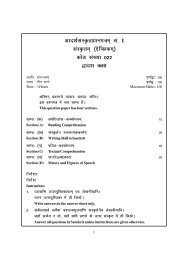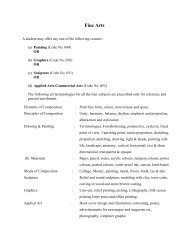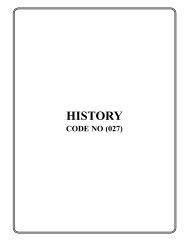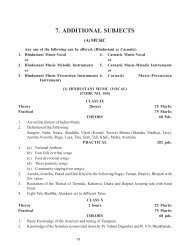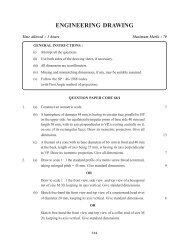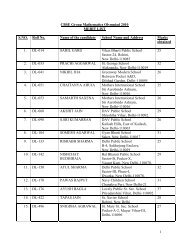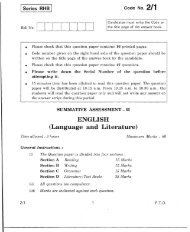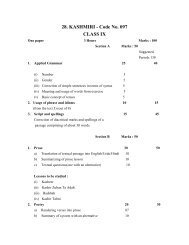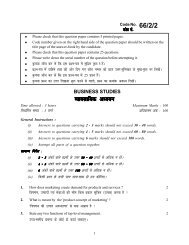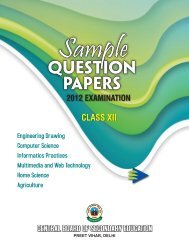A Text Book on Engineering Graphics - Central Board of Secondary ...
A Text Book on Engineering Graphics - Central Board of Secondary ...
A Text Book on Engineering Graphics - Central Board of Secondary ...
Create successful ePaper yourself
Turn your PDF publications into a flip-book with our unique Google optimized e-Paper software.
MACHINE DRAWING<br />
5 Draw to scale full size, the Fr<strong>on</strong>t view, Top view and Side view <strong>of</strong> a square head bolt <strong>of</strong><br />
diameter 24mm, keeping its axis horiz<strong>on</strong>tal.<br />
6 Draw to scale 1:1, the Elevati<strong>on</strong> and Plan <strong>of</strong> a square head bolt <strong>of</strong> diameter 30mm, when<br />
its axis is perpendicular to H.P. Give standard dimensi<strong>on</strong>s.<br />
7 Draw to scale 1:1, the Fr<strong>on</strong>t view and Side view <strong>of</strong> a T-head bolt <strong>of</strong> diameter 20mm. keep<br />
the axis <strong>of</strong> the bolt parallel to V.P and H.P.<br />
8 Draw to scale 1:1, the Fr<strong>on</strong>t elevati<strong>on</strong> and Plan <strong>of</strong> a tee head bolt <strong>of</strong> diameter 24mm,<br />
keeping the axis perpendicular to H.P.<br />
9 Draw to scale full size, the Elevati<strong>on</strong> and Plan <strong>of</strong> a hook bolt with diameter = 20mm,<br />
keeping the axis vertical. Give standard dimensi<strong>on</strong>s.<br />
10 Draw to scale 1:1, the Fr<strong>on</strong>t view, Side view <strong>of</strong> a hook bolt with diameter 25mm, when its<br />
axis parallel to V.P and H.P. Give standard dimensi<strong>on</strong>s.<br />
2.6 NUTS<br />
A nut is a machine element having a threaded hole that engages with the threaded end <strong>of</strong> the bolt.<br />
There are different types <strong>of</strong> nuts in use. In our syllabus, we are going to study about hexag<strong>on</strong>al nut<br />
and square nut.<br />
2.6.1 HEXAGONAL NUT<br />
Refer Fig 2.19<br />
The most comm<strong>on</strong>ly used type <strong>of</strong> nut is the<br />
hexag<strong>on</strong>al nut. It is a hexag<strong>on</strong>al prism<br />
provided with a threaded hole. Upper<br />
corners <strong>of</strong> a nut are "chamfered" or<br />
"rounded- <strong>of</strong>f". Chamfering is d<strong>on</strong>e to<br />
remove sharp corners to ensure the safety<br />
<strong>of</strong> the user. The angle <strong>of</strong> chamfer is usually<br />
"30° with the base <strong>of</strong> the nut". The<br />
chamfering gives arcs <strong>on</strong> the vertical faces<br />
<strong>of</strong> the nut and circle <strong>on</strong> the top surface <strong>of</strong><br />
the nut. The chamfering circle <strong>on</strong> the top<br />
surface touches the mid points <strong>of</strong> all the<br />
side <strong>of</strong> the nut which can be seen in the<br />
top view.<br />
Let us now learn to draw the views <strong>of</strong> a hexag<strong>on</strong>al nut.<br />
Fig 2.19<br />
58 ENGINEERING GRAPHICS



